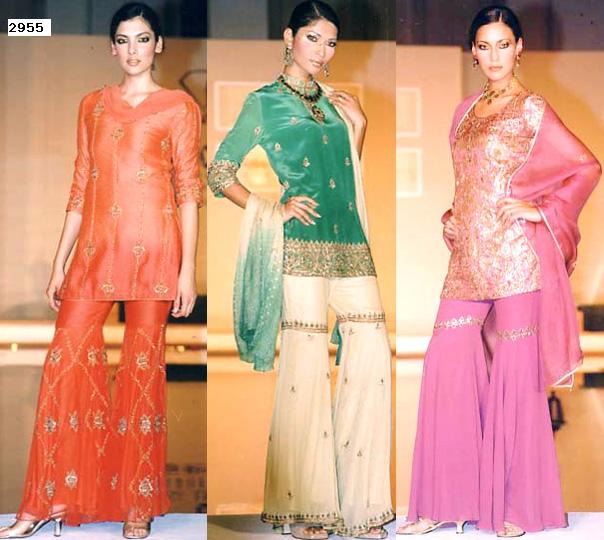Shalwaar Kameez
~ Mahvish Qureshi ’10
When people watch Bollywood movies and think about South Asian clothing the first thing that comes to mind is the vibrant colors that are used for the clothing. The famous Bollywood sarees and the east meets west fusion trend of kurta tops on jeans. The most common clothing of South Asia that is used by both men and women and is the same across South Asia from India to Pakistan to Sri Lanka is the Shalwar Kameez. The etymology of the word Shalwar Kameez takes roots in farsi and Arabic as they have similar words such as qamis and sarwal which are the similar to the South Asian usage of the words.
The Shalwar or Salwar is a loose pajama and the kameez is a long shirt, resembling olden day tunics. Women generally wear a scarf along with the shalwar kameez, this scarf is referred to as a dupatta. The dupatta is often carried as a sash across the shoulders, but can be used to cover the head in an act of modesty.
The shalwar offers a very basic design which can be elaborated on as to fit any occasion. The intricate detail of the embroidery and the work on the clothes allows for the shalwar kameez to be appropriate for any social circumstance. Men generally wear simple shalwar kameezes in either white or black. The main design of the shalwar kameez has been seen in many other countries and their dress. One such garment is known as the “seamless shirt” which was worn during the early Roman times. Also 10th century Egyptian shirts have the same cut and basic shape design as the kameez.
Shalwar Kameez became popular as an alternative to saree’s as a more conservative way of dressing. The Shalwar Kameez slowly became popular after the saree which was originally the normal dress of North India. The first people found buried in Shalwar Kameez were found in Afghanistan and seems to occur during the first century. The shalwar kameez is also popular because of its lightness which allows the people to stay cool in their clothes despite the heat.
